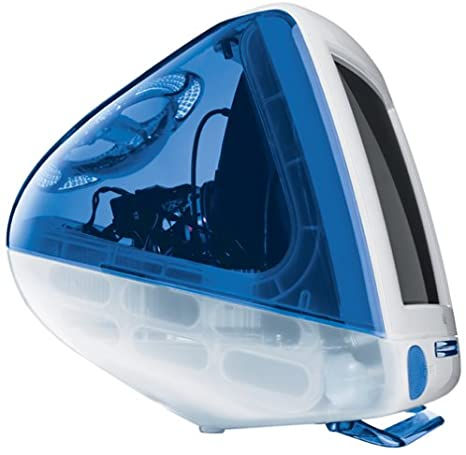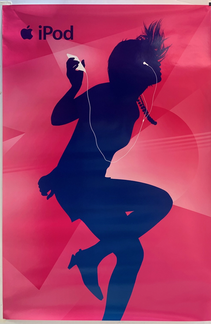And One More Thing........
- daskrantik 01

- Nov 30, 2020
- 7 min read
In the year 1998, a revolution in the computer industry took place. One particular model had taken over the industry with complete dominance. The iMac G3. For the first time.
Jobs returned to Apple. At that moment, apple was shipping 23 different products. And still it had the lowest market share, while it's competitors were thriving and flourishing fast. Microsoft had already taken the market by large, and Bill Gates had emerged as a blooming icon of the valley.
Meanwhile at NeXT, what Jobs and his team created was big black square box. It did not have a great hard drive, it did not have a great hardware, but a remarkably outstanding software, (this in future would go on to serve as the basis of MacOS).
So, one day, at apple, an executive meeting was called up. Jobs became the interim CEO or the iCEO. He asked the executives a question -
"Do you know, what is wrong with this company?"
- "We ship JUNK."
Jobs cut the product line of 23 products to only 5 products and focused on becoming the 'yardstick of quality'.
Now; people who used to work at apple at that point of time, would often find themselves facing a question
-"who are you and what do you do here?"
So, within ten minutes they used to find themselves, jobless.
Now, the first Macintosh was already a failure. So, they needed something which can again recapture the market. Thus a new product development started.
The All New iMac G3.

It was groundbreaking in each and every aspect. It was the first time, when a rapid design implementation took place, headed by none other than the legendary, Sir Johny Ive.
"Personal computers do not need to be a square", because, "there is no sex left in them"
- Johny Ive
A computer with curves, a transparent unibody and minimum peripherals. The market had to go through a revolution.
And it did! People didn't know what it did, or why they wanted it, but they wanted it badly!

Sexy, isn't it?
A further radical step was to abandon the 3½-inch floppy disk drive which had been present in every Macintosh since the first in 1984. Apple argued that recordable CDs, the Internet, and office networks were quickly making diskettes obsolete; however, Apple's omission generated controversy. At the time of iMac's introduction, third-party manufacturers offered external USB floppy disk drives, often in translucent plastic to match the iMac's enclosure. Apple had initially announced the internal modem in the iMac would operate at only 33.6 kbit/s rather than the new 56 kbit/s speed, but was forced by consumer pressure to adopt the faster standard.
Components such as the front-mounted IrDA port and the tray-loading CD-ROM drive were borrowed from Apple's laptop line. Although the iMac did not officially have an expansion slot, the first versions had a slot dubbed the "mezzanine slot". It was only for internal use by Apple, although a few third-party expansion cards were released for it, such as a 3dfx Voodoo II video card upgrade from Micro Conversions and SCSI/SCSI-TV tuner cards (iProRAID and iProRAID TV) from the German company Formac. The mezzanine slot was removed from later iMacs, though according to an article in the German computer magazine c't, the socket can be retrofitted on revision C iMacs.
The keyboard and mouse were redesigned for the iMac with translucent plastics and a Bondi Blue trim. The Apple USB Keyboard was smaller than Apple's previous keyboards, with white characters on black keys – both attributes that attracted debate. The Apple USB Mouse was mechanical, of a round, "hockey puck" design which was derided as being unnecessarily difficult for users with larger hands. Apple continued shipping the round mouse, adding a divot to the button in later versions so that users could distinguish proper orientation by feel. At the 2000 Macworld Expo in New York, a new capsule-shaped optical mouse, known as the Apple Pro Mouse (and later renamed the "Apple Mouse"), replaced the round mouse across all of Apple's hardware offerings. The Apple Pro Keyboard was introduced at the same time; it was a full-size keyboard, with an extended layout not seen since Apple's last ADB keyboards.
Apple updated the iMac over time to feature different colors. January 1999 saw the launch of Blueberry, Grape, Tangerine, Lime and Strawberry. Graphite was shortly thereafter made available as a Special Edition colour. The five fruit colours were later replaced with Ruby, Sage, Indigo and Snow. Ruby and Sage were later replaced by two limited-edition designs, "Blue Dalmatian" and "Flower Power" patterns. The final lineup consisted uniquely of Indigo, Snow and Graphite, later limited to Snow only before being discontinued.

While launching G3, Steve was going through some personal issues with his daughter Lisa. She was brought to Apple Park, on the day of launch. She was mad at Steve. They crossed some words and she barged out of the building into the parking lot. Steve followed her. Finally she opened up and buried herself in her father's arms. Her walkman poked Steve.
He said, "why are you carrying a brick on your waist?"
- "Its not a brick, it's my walkman. It's for carrying my favourite songs on the go".
- "It's ugly. We are not savages. You do not need to carry around a brick playing cassette tapes. Imma gonna put a 1000 songs in your pocket."
At that point of time, it might have sounded absurd. But, hey, that was Steve, at Apple Inc. Nothing is absurd for them.
Thus began the hunt to fit a 1000 in our pockets.
Now, the first question was, why?
Because at that time, there was no other device which could store that many songs and had that much portability. A CD drive or a flash player had the capacity to hold 10 to 15 songs. A Flash drive was much more capable indeed. 150 songs. Top of the line was a hard disk based juke box player (it was very ugly looking), which could hold upto a 1000 songs.
So, none of them would be a portable music player of your choice.
The market was large enough.
Now, to fit a 1000 songs in your pocket, the first priority was to make it small. Steve's choice of small was, nothing bigger than a deck of cards. When Apple engineers first heard it, they freaked out. Has he gone crazy?
Jobs obviously hadn't. He was just pushing the barrier.
Now, to fit a 1000 songs into a device, which is no larger than a deck of cards in size, the first thing you need to focus on, is design on one side and put music in that device without violating copyrights and also make music accessible at one common place on the other.
Stepping into the digital music realm
Now, stepping into this arena, where, at that moment giants like, HP and Microsoft were already sitting on, was risky. Apple needed something to stand aside. The company had already made a statement with the iMac. Now, developing a platform in MacOs or OSX, as it was called back then, was not difficult. So, iTunes was developed as a music library, media player and an online radio broadcaster (which eventually gave birth to the idea of online music streaming). It was not only phenomenal, but super easy to use. The existent platforms had limited capabilities, like they had slow encoding speeds and quality restrictions. Apple changed it all, with the launch of iTunes. You could burn CDs, play music, and more importantly carry your playlist with you everywhere. This again, set the foundation of a music revolution.
Now, if there was place where one can access all his/her favourite songs anytime anywhere, then why CDs still needed to exist?
So, Jobs decided to open a whole new online music store, or the iTunes store.
All the majors of the music industry were called up for a meeting at Apple park, for a 'meeting'.
Meeting starts.
Jobs said, "If I can cannot sell your music for $0.99 on my store, I am not selling it."
The End.
Needless to say, iTunes was a supermassive hit,
And later that year, another revolutionary product was launched.
The iPod.
The product which eventually became an icon and brought media to our everyday lives. The boring and unattractive clumsy big design was totally changed. It was the size of a deck of cards and had the shape of a deck of cards inside a packet.
An incredibly small device with an incredibly thin hard disk and a click wheel.
It brought into concept of 'plug and sync and charge' at the same time. So, it's pretty clear that each and every aspect of personal computing and portable device experiences that we live through today, was generated from the mastermind of a single company.
The iPod line came from Apple's "digital hub" category, when the company began creating software for the growing market of personal digital devices. Digital cameras, camcorders, and organisers had well-established mainstream markets, but the company found existing digital music players "big and clunky or small and useless" with user interfaces that were "unbelievably awful," so Apple decided to develop its own. As ordered by CEO Steve Jobs, Apple's hardware engineering chief Jon Rubinstein assembled a team of engineers to design the iPod line, including hardware engineers Tony Fadell and Michael Dhuey, and design engineer Sir Jonathan Ive. Rubinstein had already discovered the Toshiba hard disk drive while meeting with an Apple supplier in Japan, and purchased the rights to it for Apple, and had also already worked out how the screen, battery, and other key elements would work.The aesthetic was inspired by the 1958 Braun T3 transistor radio designed by Dieter Rams, while the wheel-based user interface was prompted by Bang & Olufsen's BeoCom 6000 telephone. The product ("the Walkman of the twenty-first century") was developed in less than one year and unveiled on October 23, 2001. Jobs announced it as a Mac-compatible product with a 5 GB hard drive that put "1,000 songs in your pocket."
To compensate for the "boring" design of standard CDs, iTunes had custom-made jewel case inserts. After burning a CD from a playlist, one can select that playlist and bring up a dialog box with several print options, including different "Themes" of album artworks.


It became a part of the pop culture, with new redesigned earphones and colourful graphics and innovative illustrations. Everybody just wanted it.
So, another breakthrough happened. This product not only revolutionised the music industry, but paved the way for the future concept of portable media, which we experience today.
Now, a music and video streaming device, though had a huge impact, but, failed to fulfil another major criteria. Communication on the go.
Stay tuned as we slowly unveil the innovation story of the present day smartphone, as we see it today, and how the innovations of this billion dollar tech giant shaped the modern world.
The Greats Behind The Greats.
A PicturePenner Original Series.
Concepted by the Matters That Matter team, PicturePenner.
Series Developed by Krantik Das & Tunir Ghosh.
Series headed by Krantik Das.
A ©PicturePenner MTM Exclusive















































































































Had a good read. The technical details bit in iMac was not that interesting. Could have been avoided to some extent. But other parts were really great.